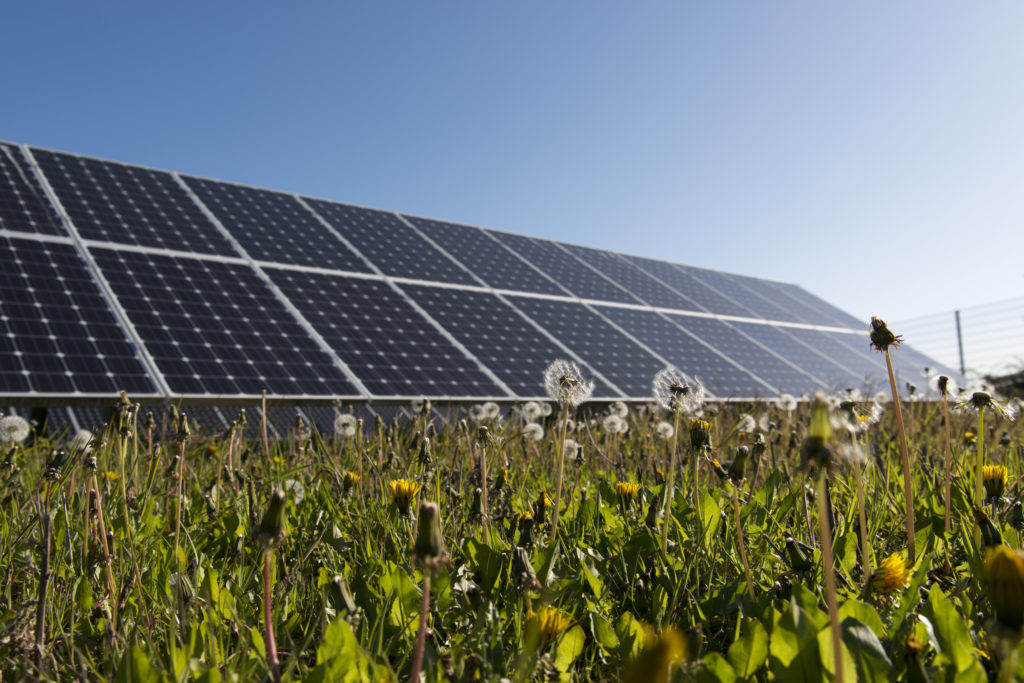The science is clear – global temperature rise must be kept to 1.5°C – and as a global fashion company we have to act.
Climate
Degrees matter
The impacts of climate change are already being felt around the world and science shows that we need to keep global temperature rise to 1.5°C to secure a liveable future for our planet.1
At H&M Group, our goal is to reduce absolute greenhouse gas (GHG) emissions across our value chain by 56% by 2030 and by at least 90% by 2040 (against a 2019 baseline).2 We will also balance out the remaining 10% of unavoidable emissions to reach net-zero by 2040 through carbon dioxide removals. These goals were verified by the Science Based Targets Initiative (SBTI) in September 2022.3
What is net-zero?
Currently we cannot decrease our emissions 100% to achieve absolute zero. Instead, we need to take action to balance out any unavoidable, or residual, emissions to reach net-zero.3
We also have a series of supporting targets:
- Reduce electricity intensity in stores by 36% by 2030 against a 2016 baseline.4
- By 2030, source 100% renewable electricity in our own operations, with at least half coming from power purchase agreements with new renewable electricity generation.
- By 2030, source 100% renewable electricity for our garment production supply chain – from spinning to finished product in tiers 1, 2 and 3.
- Phase out coal from our garment suppliers in tiers 1, 2 and 3 by 2026.5
The different areas of our sustainability work are linked and our work in one area can benefit another. Cutting our GHG emissions could also reduce our impact on water resources, help protect biodiversity and support human rights such as health, livelihoods, land rights and access to water.
However, focusing solely on our impact will not be enough. We need to take action beyond our value chain through investing in climate and nature projects, such as LEAF Coalition that provides financial support to protect tropical forests.
The whole picture
Our Climate Transition Plan brings together all our climate related activities from across our business into one document. It focuses on our journey towards 2030 and includes our targets, strategy and methodology as well as detailing our actions and the challenges we face.
Our report, Powering change: Our energy use 2024, outlines how we use energy in our operations and supply chain. It also shares our view on biomass, renewable electricity procurement and the shifts needed to reach our climate and energy goals.
Our climate action framework
To guide our work, we have created a four-step action framework that minimises our negative impact and maximises our positive contribution.
STEPS AND ACTIONS
Actions for wider and accelerated change within and beyond our value chain
Advocate for systemic change
- Advocate for public policy that aims to limit global temperature rise to 1.5.C and push for legislation that accelerates the decarbonisation of our value chain.
- Engage and collaborate with peers and others to enable and inspire global climate action.
Contribute to addressing impact
- Remove and permanently store atmospheric carbon dioxide to reach net zero by 2040.
- Protect existing carbon sinks to avoid emissions and biodiversity loss that arise from degradation.
Impact targets
Contribute to addressing impact
- Remove and permanently store atmospheric carbon dioxide to reach net zero by 2040.
- Protect existing carbon sinks to avoid emissions and biodiversity loss that arise from degradation.
Foundation
Calculate and disclose impact
- Collect GHG emissions and energy-use data in accordance with the latest industry models and science.
- Disclose results transparently and openly.
Identify, quantify and mitigate risk
- Identify climate risks in line with the latest science and best practice.
- Assess financial, people and planet effects and prioritise risks.
- Create and follow up on plans to mitigate risks and build resilience.
How we're reaching net-zero
Address direct and indirect impact
- Supporting our suppliers to save energy and switch to renewables
We have set up funding to support our suppliers to take energy efficiency measures and switch to greener energy. To date, the Green Fashion Initiative has supported 23 projects with the potential to reduce emissions in our supply chain by 148,000 tonnes CO2e. Of this, 67,000 tonnes are attributable to H&M Group. - Phasing out coal
In 2024, 27 of our tier 1 and 2 suppliers reported the use of on-site coal boilers, down from 118 units in 2022. This is due to our push to phase out coal and electrify steam, changes to our supplier base and local legislation. In 2024, we expanded traceability to include tier 3. This helped identify 12 more facilities using coal, bringing the total to 39. We have now set a goal to eliminate on-site coal boilers in our supply chain by the end of 2026. - Greener electricity in Europe
We’ve signed virtual power purchase agreements (PPAs) in the UK, Sweden, and Spain to source enough green electricity for almost all our operations in Europe. We have also signed a PPA in the US. - Energy efficiency at our suppliers
In 2024, we enrolled 78 new facilities in our energy efficiency programme, identifying potential reductions of more than 656,000 tonnes CO2e. This brings the total of projects to 1027, with an expected annual reduction of 350,000 tonnes Co2e.. - RE100 member company
RE100 brings together businesses that are committed to sourcing 100% electricity from renewable energy sources to accelerate the transition to a low-carbon economy by creating demand for renewable electricity, and to encourage governments to increase their ambition to deliver renewable energy.
Contribute to addressing impact
- Carbon dioxide removal
Current options for permanent carbon dioxide removal are limited. By investing now, we can help scale solutions so more organisations can access them in the future. In 2022, we signed a multi-year deal with Climeworks for direct air capture and storage. In 2023, we joined Frontier and have since signed twelve offtake agreements to buy permanent carbon removals when they are delivered. - Protecting carbon sinks
Our partnership with LEAF Coalition works towards protecting tropical forests, an important existing carbon sink. In 2024, we signed an agreement along with other LEAF buyers to purchase five million emissions reduction credits from the Brazilian state of Pará.
Advocate for system change
- Promoting policy
We advocate for legislation that supports decarbonisation of our value chain. In 2024, we signed the World Economic Forum’s (WEF) COP 29 open letter and we joined the University of Cambridge Institue for Sustainability Leadership’s Corporate Leaders Group Europe. - Renewable energy access
In our main retail and production markets we work with policymakers and stakeholder platforms, such as the UN Framework Convention on Climate Change Fashion Charter, WEF and RE100, to improve the availability of renewable energy. - Carbon offsetting or carbon compensation
When the Science Based Targets initiative (SBTi) suggested they would allow companies to use voluntary carbon markets to offset scope 3 emissions we wrote to the Board of Trustees at SBTi to raise our concerns about this statement. Read the letter. - Holistic partnership
We have worked with WWF for many years. The partnership covers climate, water and biodiversity. Find out more here.
Financing emission reductions
Our green investments direct funding towards initiatives like these that will help us reduce emissions and reach our goals. The return on these investments is measure in GHG emissions reduction, not in financial gain.
The role of biomass energy
Factories in the textile supply chain often rely on thermal energy generated by burning fossil fuels. Our priority is to work with our suppliers to move away from this practice by electrifying their factories and, at the same time, switching to renewable electricity. However, a lack of access to renewable sources and unreliable local electricity grids can slow down this transition. Therefore, certain types of biomass can act as a stop-gap solution. Read more about how we’re working with biomass.
The sustainability risks of different biomass feedstocks can vary greatly. We help our suppliers to select the biomass fuel type with the lowest possible risk. This support builds on the biomass tools and guidelines from the Institute of Sustainable Communities.
1 The agreement to keep temperature rise was agreed in the Paris Agreement, a legally binding international treaty on climate change.
2 For more information about our goals and the progress we’ve made, see our sustainability progress report.
3 Net-zero as defined by SBTi’s Net-Zero Standard
4 This is an updated target. We increased the ambition to reduce electricity demand in our stores when we reached our 2030 target in 2023.
5 The total number of facilities increased by 12 to a total of 39 in 2024 due to increased traceability allowing us to include tier 3 facilities in the coal phase-out by 2026.
We publish our sustainability progress report annually. In this document, we set out our goals and the progress we’ve made in the previous year. Find the latest version here. More up to date information can be included on this page.
RELATED

